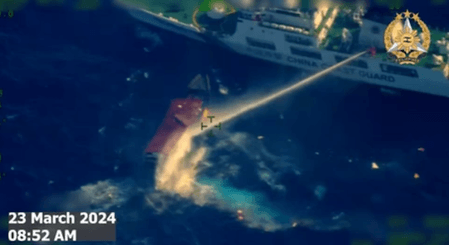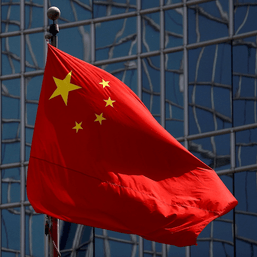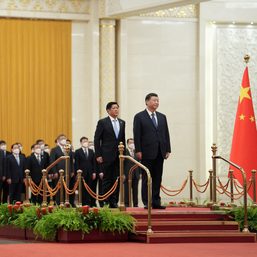SUMMARY
This is AI generated summarization, which may have errors. For context, always refer to the full article.
![[OPINION] Beyond Ayungin Shoal: The primacy of national resolve](https://www.rappler.com/tachyon/2024/04/beyond-ayungin-shoal-april-5-2024.jpg)
In the aftermath of the recent sea skirmish at Ayungin Shoal, both President Ferdinand Marcos Jr. and Defense Secretary Gilberto Teodoro issued strongly worded statements during the Holy Week. This was capped by a policy pronouncement from the office of Executive Secretary Lucas Bersamin on Easter Sunday morning.
President Marcos issued instructions based on his consultations with his national security advisors; mentioned his discussions with like-minded partners in the international community; and assured the public that in the following weeks the national government will develop a ‘proportionate, deliberate, and reasonable response to the ‘illegal, coercive, aggressive, and dangerous (ICAD) actions being undertaken by the Chinese Coast Guard (CCG) and its partner, the maritime militia. He concluded by stating:
‘We seek no conflict with any nation, mores o nations that purport and claim to be our friends but we will not be cowed into silence, submission, or subservience. Filipinos do not yield. ‘
Teodoro’s statement reflected Marcos’ key points, but was more scathing in his criticism of the Chinese government, particularly on the position it has taken on the issue of the West Philippine Sea. Before the Holy Week ended, Bersamin released a copy of Executive Order Nr 57, pertaining to the “Strengthening of the Philippines’ Maritime Security and Maritime Domain Awareness.”
Amid all these developments, the Chinese Communist Party’s (CCP) propaganda machinery, along with its Filipino sympathizers here in Manila, went on overdrive in social media. This was part of efforts to debunk the position of Marcos and the rest of the national government against the actions the CCG has undertaken in the last blockade run at Ayungin Shoal; and perhaps win the sympathy of those residing outside its echo chamber. The doomsday narrative favored by former President Rodrigo Duterte and his supporters were likewise resurrected during the Holy Week.
So, where are the Philippines and China currently from a strategic, operational, tactical, and institutional point of view?
Losing hearts and minds
Strategically, China has lost any chance of winning the hearts and minds of of Filipinos, or at least a quiet acquiescence of its regional ambition in the South China Sea, just as the rest of ASEAN member-states.
It would be difficult to sway the 70-80% of Filipinos, which are of the opinion that the national government should protect our sovereign rights in our exclusive economic zone. And with the recent statements of Marcos, the CCP can no longer influence the country’s top leadership to simply turn a blind eye to its encroachment in Philippine waters. If Beijing decides to play the long game, it should be working towards rebuilding its network of sympathizers among local politicians in preparation for the 2028 presidential elections. However, if the CCP panics now, one of the short-term prospects might be an attempt at regime change against Marcos through its pro-China surrogates here in Manila.
Operationally, China is at the top of its game with the numerical advantage in combatant ships enjoyed by the PLA-Navy against the US Navy.
This allowed Beijing to assert sea control over the South China Sea and adroitly employed its CCG and maritime militia with impunity against the coastal states of Southeast Asia. However, the upcoming meeting among the presidents of the Philippines and America, and the prime minister of japan; might offer respite for our beleaguered Navy and Coast Guard. The conversation involving a PH-US-Japan trilateral arrangement started off within military circles a few years ago. However, it has quickly gained traction among the policymakers’ circle as the situation in the South China Sea deteriorated. If these collaboration evolves into a more deliberate, calibrated, and sustained form of deterrence patrols, then we can see the beginning of an effort to restore the naval balance of power in the East and South China Seas.
Disruptive, effective
Tactically, China’s grayzone measures remain disruptive and effective. To make a dent, the Philippines should address the issue of capability and come up with a viable countermeasure.
Unfortunately, the Navy’s modernization program was focused against the PLA-Navy’s surface fleet, not the CCG or the militia. The thin-hulled OPVs of the Coast Guard are not designed for bruising tactics at sea. On the other hand, the Navy could look at unmanned, expendable swarms of drones as a solution; while the Coast Guard might consider acquiring thicker-hulled ships instead. As for BRP Sierra Madre, replacing it with a movable commercial off-the-shelf oil rig might be the logical solution, but it is not necessarily the politically correct approach for the meantime. Regarding countermeasures, perhaps our government strategists could take inspiration from the Cod Wars involving the United Kingdom and Iceland, which transpired in the North Atlantic in the 1950s up to the 1970s. Iceland defeated the British Royal Navy using innovative tactics; but others attributed it to intangibles such as stronger resolve, the primacy of one’s interests, and the willingness to take calculated political risks.
Institutionally, the consolidation of maritime security concerns under the National Maritime Council is the right move. It rationalizes the policy-making and operational tasks under one roof, it breaks down the bureaucratic stovepipes that evolved over the years, and addresses the inevitable ‘turf wars’ that ensued when too many agencies are involved in a particular issue with intersecting mandates.
Hopefully, we can see in the immediate future a synergy in the diplomatic, communications, military, and economic approaches undertaken by the government, in dealing with the complex manifestations of the hard and sharp power; directed against the country and our fellow Filipinos.
President Marcos’s assertion that Filipinos do not yield is the rightful battle cry for our times. Yes, it is a call to action; but it should be carried out with proper discernment, careful calculation, and audacity when the opportunity arises. – Rappler.com
Retired Rear Admiral Rommel Jude Ong was formerly vice commander of the Philippine Navy.
1 comment
How does this make you feel?






![[In This Economy] Marcos’ POGO ban is popular, but will it work?](https://www.rappler.com/tachyon/2024/07/thought-leaders-marcos-pogo-ban.jpg?resize=257%2C257&crop=255px%2C0px%2C720px%2C720px)
![[Rappler Investigates] POGOs no-go as Typhoon Carina exits](https://www.rappler.com/tachyon/2024/07/newsletter-graphics-carina-pogo.jpg?resize=257%2C257&crop=424px%2C0px%2C1080px%2C1080px)












I agree: “President Marcos’s assertion that Filipinos do not yield is the rightful battle cry for our times. Yes, it is a call to action; but it should be carried out with proper discernment, careful calculation, and audacity when the opportunity arises.” Can President Marcos Jr. quickly and correctly see such an opportunity? And if he can, will his action be based “on proper discernment, careful calculation, and audacity”? Let us wait and see. Thanks to Retired Rear Admiral Rommel Jude Ong for this enlightening and inspiring article.